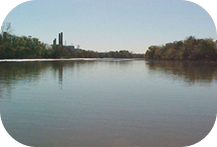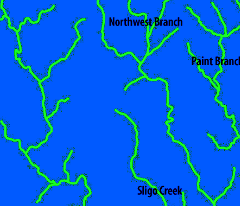GW celebrated Earth Week 2006 with a variety of activities during the period April 17-23, 20006. GW environmental programs worked with American University, Catholic University of America and the University of D.C. to sponsor six environmental program during Earth Week.

The focus at GW was on restoration Washington, DC’s Anacostia River. Activities included a lecture and film presented by Steve McKinley Ward of the Anacostia Watershed Society. The event was held on April 20 at GW’s Media and Public Affairs Building at the center of the main campus.
Other events sponsored by GW’s one-university partners, the Washington DC Council of Governments, included the following:
Holistic Energy Day, Tuesday, April 18, 2006 - This exhibition included organizations, agencies, and businesses that focus on energy efficiency, renewable energy, and alternative fuels, in a showcase of how their services enable D.C. to use energy more wisely and to access more effective, alternative resources.
Air and Atmosphere Day, Wednesday, April 19, 2006 - Washington is a non-attainment area for air pollution, according to federal health standards. As Earth is one big system and all life and resources are interconnected, the District's air is a major contributor to local health concerns and global climate change. This day encouraged participants to reduce their use of resources that contribute to regional air pollution and subtly change their behaviors to influence positive climate change.
Water Day, Thursday, April 20, 2006 - Water is a vital facet of life in Washington, D.C., and the Anacostia and Potomac Rivers and Rock Creek are important water arteries in Washington, D.C. This day focused on water conservation and water protection in the District.
Sustainable Buildings Day, Friday, April 21, 2006 - The physical structures of D.C. take their toll on the natural environment. This day featured building techniques that tread more lightly on our Earth through the use of reclaimed materials, more energy efficient technologies, the use of less or non-toxic materials, and other environmentally beneficial methods.


